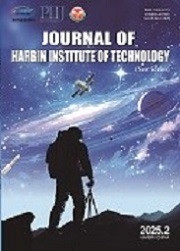| Author Name | Affiliation | | Nwe Nwe Htay Win | School of Computer Science and Technology, Harbin Institute of Technology, Harbin 150001, China | | Jian-Min Bao | Key Lab of Broadband Wireless Communication and Sensor Network Technolog, Jiangsu Provincial Engineering Research Center of Telecommunications and Network Technology, Ministry of Education, Nanjing 210003, China | | Gang Cui | School of Computer Science and Technology, Harbin Institute of Technology, Harbin 150001, China | | Purevsuren Dalaijargal | School of Computer Science and Technology, Harbin Institute of Technology, Harbin 150001, China |
|
| Abstract: |
| Due to a rapid increase in the number of functionally equivalent web services at open and dynamic IoT service environment, QoS has become a major discrimination factor to reflect the user’s expectation and experience of using a service. There are different languages and models for expressing QoS advertisements and requirements among service providers and consumers. Therefore, it leads to the issues of semantic interoperability of QoS information and semantic similarity match between a semantic description of the service being requested by the service consumer, and a formal description of the service being offered by the service provider. In this paper, we propose a hierarchical two-layer semantic QoS ontology to promote the description and declaration of QoS-based service information in detail for any domain and application. And, we develop a semantic matchmaking algorithm to compare the web services according to their QoS information and adopt analytical hierarchy process (AHP) to make decision for the ranked services depending on the QoS criteria. The comparison study and experimental result show that our proposed system is superior to other service ranking approaches. |
| Key words: IoT service environment semantic QoS ontology semantic matchmaking algorithm QoS-based service information analytical hierarchy process |
| DOI:10.11916/j.issn.1005-9113.2014.06.017 |
| Clc Number:TP3 |
| Fund: |






